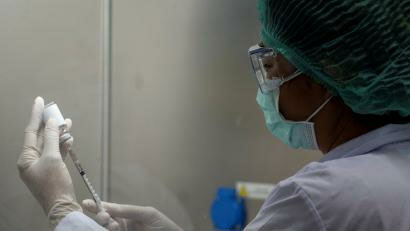MOST vaccines contain an infectious pathogen or a part of it, but mRNA vaccines deliver the genetic instructions for our cells to make viral or bacterial proteins themselves. Our immune system responds to these and builds up immunity.
Messenger RNA (mRNA) is a single-stranded molecule naturally present in all of our cells. It carries the instructions for making proteins from our genes, located in the cell nucleus, to the cytoplasm, the main body of our cells.
Enzymes in the cytoplasm then translate the information stored in mRNA and make proteins.
Stay informed with live updates on the current Covid-19 outbreak and visit our coronavirus hub for more advice on prevention and treatment.
An mRNA vaccine delivers the instructions for making a bacterial or viral protein to our cells. Our immune system then responds to these proteins and develops the tools to react to future infections with the pathogen.
mRNA vaccine technology is not new, but there were no mRNA vaccines that had approval for use in humans until recently.
Some vaccines use a whole virus or bacterium to teach our bodies how to build up immunity to the pathogen. These pathogens are inactivated or attenuated, which means weakened. Other vaccines use parts of viruses or bacteria.
Recombinant vaccine technology employs yeast or bacterial cells to made many copies of a particular viral or bacterial protein or sometimes a small part of the protein.
mRNA vaccines bypass this step. They are chemically synthesized without the need for cells or pathogens, making the production process simpler. mRNA vaccines carry the information that allows our own cells to make the pathogen’s proteins or protein fragments themselves.
Importantly, mRNA vaccines only carry the information to make a small part of a pathogen. From this information, it is not possible for our cells to make the whole pathogen.
Both mRNA Covid-19 vaccines that Pfizer/BioNTech and Moderna have developed cannot cause Covid-19. They do not carry the full information for our cells to make the SARS-CoV-2 virus, and therefore, cannot cause an infection.
RNA is a notoriously fragile molecule. Delivering mRNA successfully to cells inside our bodies and ensuring that enzymes within our cells do not degrade it are key challenges in vaccine development.
Chemical modifications during the manufacturing process can significantly improve the stability of mRNA vaccines.
Encapsulating mRNA in lipid nanoparticles is one way to ensure that a vaccine can successfully enter cells and deliver the mRNA into the cytoplasm.









